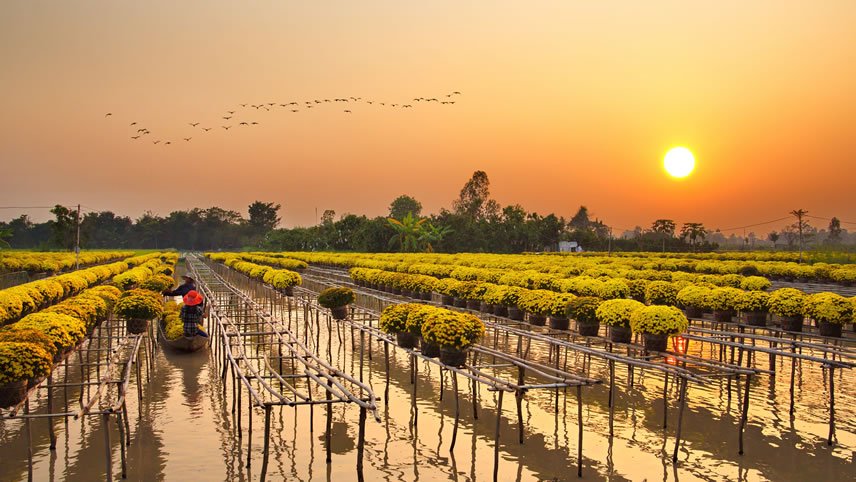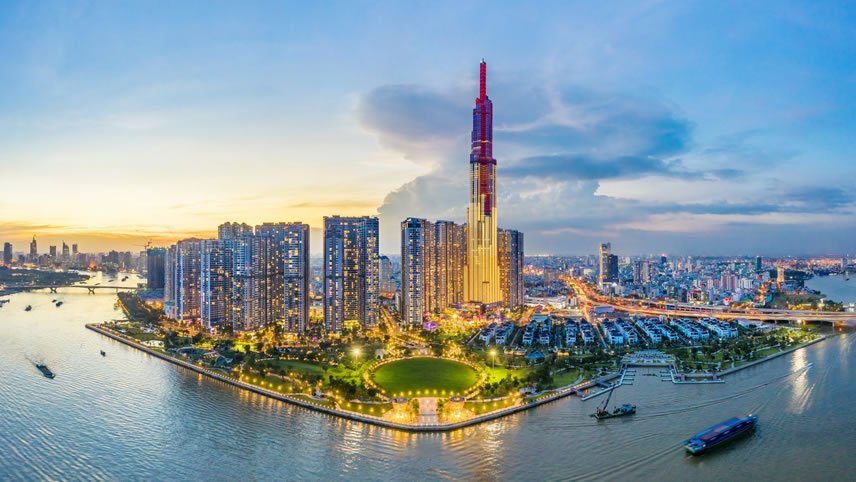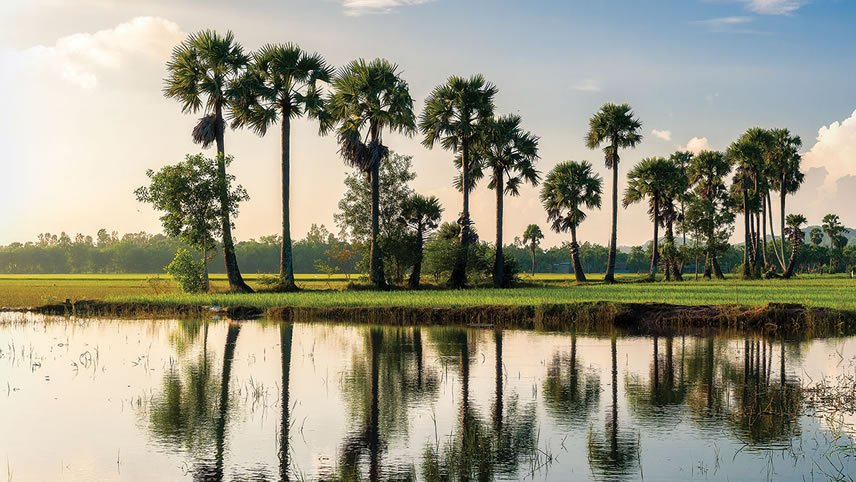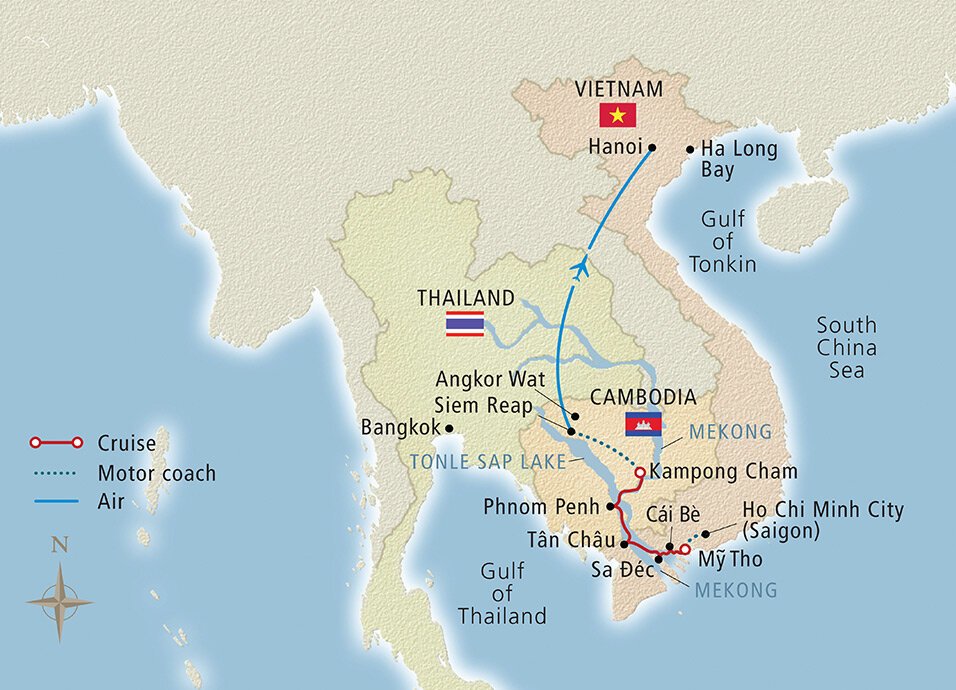Overview
Itinerary
Arrive and check in to your hotel. Founded as a small fishing village, Ho Chi Minh City is now Vietnam's largest city. Though still commonly called Saigon, locals are as likely to simplify the name of their hometown to HCMC. No matter what you call it, it is a seamless blend of history and modern youthful energy, where pagodas and French colonial grandeur mingle with bustling old-world marketplaces and modern skyscrapers, all against a constant buzz of motor scooters and trill of bicycle bells. From enduring, narrow alleyways to wide, Parisian-style boulevards, Ho Chi Minh City has an identity all its own.
Ho Chi Minh City is a heady mix of French and Vietnamese cultures, where baguettes and croissants are sold alongside pho (Vietnamese noodle soup) and motor scooters buzz past colonial-era architecture. The city's wide boulevards are reminiscent of Paris, lined with jewels such as the Opera House, fashioned after the Petit Palais, and the grand Central Post Office, designed by Gustave Eiffel. Aromatic food stalls and colorful shops purvey local specialties and all manner of Vietnamese wares, from conical hats to ao dai, the traditional silk tunic worn by women.
Despite Ho Chi Minh City's densely packed urban districts, there are several green spaces that can be enjoyed. In Tao Dan Park, locals can be spotted engaging in their daily morning exercise with a round of badminton, tai chi or the outdoor gym equipment. Afternoons welcome a number of classes, from aerobics to dance, attracting good-sized crowds. In addition to the wide open spaces, there are a variety of walking trails shaded by towering trees as well as water features and ponds to be admired. After breakfast, check out of your hotel and begin your journey to your embarkation city.
A feast for the senses, Cái Bè is a Vietnamese enclave nestled among the lacework of waters of the Mekong Delta. Surrounded by fruit orchards, this small town with a charming village air boasts remarkably preserved old houses built in the typical style in its Đông Hòa Hiệp Commune. Village life here centers on the waters of the delta, where old-world commerce still survives as craftspeople trade and sell their produce and wares in small floating markets. The region is also known for Cài Luong, a Vietnamese-style folk opera that mixes ballads and theater with storylines focused on rural life.
Located in southern Vietnam, Sa Ðéc is a French colonial river port as well as an agricultural trading center. Prior to the 19th century, it was one of the largest cities in the Mekong Delta. Today, it is a sleepy, laid-back town where tree-lined streets invite easy strolls and old villas are surrounded by orchards and markets selling flowers. The childhood home of Marguerite Duras, one of France's best-known authors, Sa Ðéc gained attention as the setting of her autobiographical novel The Lover, which chronicled her affair with the son of a wealthy Chinese businessman.
A thriving border town on Mekong shores, Tân Châu occupies a rural district in the delta of Vietnam. Founded in the mid-18th century, its growing population has earned it an upgrade to a township. High-quality silk is produced here, skillfully woven in delicate traditional patterns and expertly dyed in bright colors. Sedge grass weaving is another long-held tradition, producing mats, baskets and other useful items. The surrounding terrain, crisscrossed by canals and smaller rivers, is mostly flat and supports rice fields and other agriculture.
Time seems to have passed by Phnom Penh. Once known as the 'Pearl of Asia,' this bustling Cambodian capital is home to charming French colonial architecture along relaxed boulevards, beautifully wrought pagodas and the monumental Angkorian complexes for which Cambodia is revered. The city's park-like riverfront boasts plenty of inviting cafés and restaurants, and its rich collection of universities, museums and other institutions have grown into Cambodia's center of cultural heritage.
Twice chosen as Cambodia's capital, Phnom Penh's history is punctuated with periods of Khmer and French rule. More recently, the city has experienced rapid urbanization and has enjoyed a thriving cultural and food scene. Although often shadowed by the more well-known cuisine of neighbors Thailand and Vietnam, traditional Cambodian fare represents the flavors and techniques of one of the world's oldest surviving culinary traditions: Khmer cuisine. In Phnom Penh, opportunities abound to sample its signature dishes, from savory fish amok to fresh nom banh chok rice noodles.
Journey along the Mekong and understand why it is truly the 'Mother River of Southeast Asia,' sustaining civilizations through the centuries. Pass Mekong rice fields, villages and towns that seem frozen in time, and see ample evidence of the river's role in farming and fishing. A lush landscape of evergreen and broadleaf forests drapes across flat landscapes that rise to rugged peaks. As the river opens up to the Vietnamese delta, narrow rivulets lead to inviting floating markets where all manner of the earth's bounty is sold from ubiquitous longboats.
The capital city of Kampong Cham province, which loosely translates to 'the riverside of the Cham people,' is the sixth-largest city in Cambodia. Its streets, which spread away from the Mekong River, exude a pleasant French colonial charm. The Kizuna Bridge over the river, opened in 2001, is the first span to cross the Mekong in Cambodia. Another bridge, modest in comparison but no less impressive, is the elaborate bamboo bridge that, during the dry season, leads to Koh Paen island, where Khmer and Cham villages are mounted on stilts in anticipation of high water season.
After breakfast, disembark your ship and transfer to your destination. Gateway to the magnificent temples of Angkor Wat, Siem Reap boasts an atmospheric Old French Quarter where colonial-style buildings stand alongside Chinese architecture. Everywhere there is evidence of its place in history as a city with strong ties to its rural past. Still, Angkor Wat gets much of the attention; the UNESCO World Heritage Site is one of the most important archaeological sites in the world, drawing not only historians and archaeologists but also the likes of Charlie Chaplin and Jackie Kennedy. Arrive and check in to your hotel.
The lasting legacy of the Khmer Empire is evident across many parts of Southeast Asia. The Khmer were known for their construction skills and ability to establish economic links with societies across the continent, trading in rice, fish and other goods via the Mekong River. The Khmer civilization was deeply embedded with Hindu and Buddhist beliefs, which are reflected in much of the country's ancient architecture. The majestic monuments of Angkor Wat and Bayon pay tribute to the Khmer's vast power and wealth, which at its peak was larger than Europe's Byzantine Empire.
From Siem Reap, a number of stunning smaller temples can be explored. The ruins of Ta Prohm Temple, featured in the movie Lara Croft: Tomb Raider, is a fascinating sight, with its collection of towers, courtyards and corridors of delicately carved stone enveloped by the vast roots of banyan trees. The center of Siem Reap enjoys a vibrant atmosphere with eateries offering a range of local and international cuisine, as well as stores that are open until late selling a variety of goods, from Khmer art and jewelry to handmade silks and lacquerware.
After breakfast, check out of your hotel and fly to your destination city. A French-conceived colonial city, no other destination better represents the contrasting nature of modern Vietnam than Hanoi. It was the capital of French Indochina from 1902 to 1954 and today boasts one of the most beautiful panoramas in the region, with more cultural sites than any other city in Vietnam. Amid more than 600 pagodas and temples, Hanoi's Old Quarter displays the original streets and architecture from the early 20th century. A stroll along its historic streets is like stepping back in time. Arrive and check in to your hotel.
At the heart of Hanoi's Old Quarter lies a labyrinth of narrow streets that, despite the noise levels, are well organized. Amid the bustle, a pattern of trade emerges from the street names, each dedicated to the products that have been produced and sold here for centuries. From Hàng Bạc (silver) to Hàng Bồ (baskets) and Hàng Bông (cotton) to Hàng Đào (silk), just about any item can be found at a store or market stall alongside a variety of Vietnam's famous street food vendors.
A treasure trove of tasty delights awaken the senses in the Vietnamese capital. Hanoi is famous for its delicious street food, serving up an array of dishes from all corners across the city. Steaming bowls of pho, a Vietnamese rice noodle soup, are served alongside marinated meats grilled to perfection. The café scene in Vietnam is equally as popular; egg coffee is a local specialty and a decadent cap to any meal. After breakfast, check out of your hotel and journey home.
Life Onboard Viking Saigon
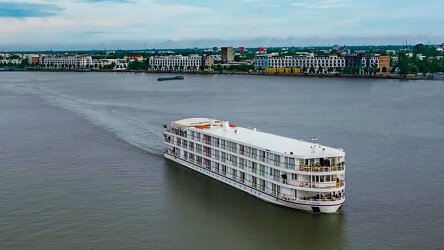
Passengers can expect to find plenty of Viking's trademark Scandinavian touches aboard Viking Saigon. Read more
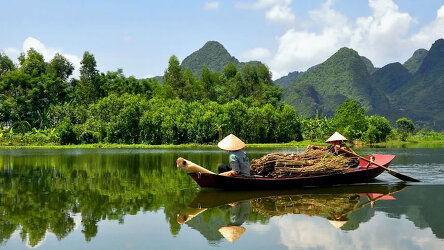
Every aspect of your Viking cruise is designed for the curious traveler seeking rich cultural immersion. Read more

Elegant, light-filled ships thoughtfully designed to connect you to Asia and the Mekong. Read more
Brochure
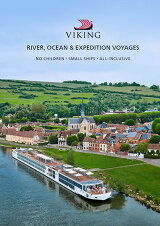
Viking River, Ocean & Expedition Voyages (2025-27)
Availability
 USD
Port charges, taxes and fees included.
USD
Port charges, taxes and fees included.
Viking River Cruise $25 Deposits!
Tour & cruises prices are per person. Prices shown have savings applied, are subject to availability and may be withdrawn at any time without notice. Pricing and trip details are correct at this point in time, however are subject to confirmation at the time of booking and are subject to change by Viking. For cruise itineraries, cabin images are sourced from Viking. These should be treated as indicative only. Cabin inclusions, upholsteries and room layout may differ to the image(s) shown depending on the ship selected and your sailing dates.
